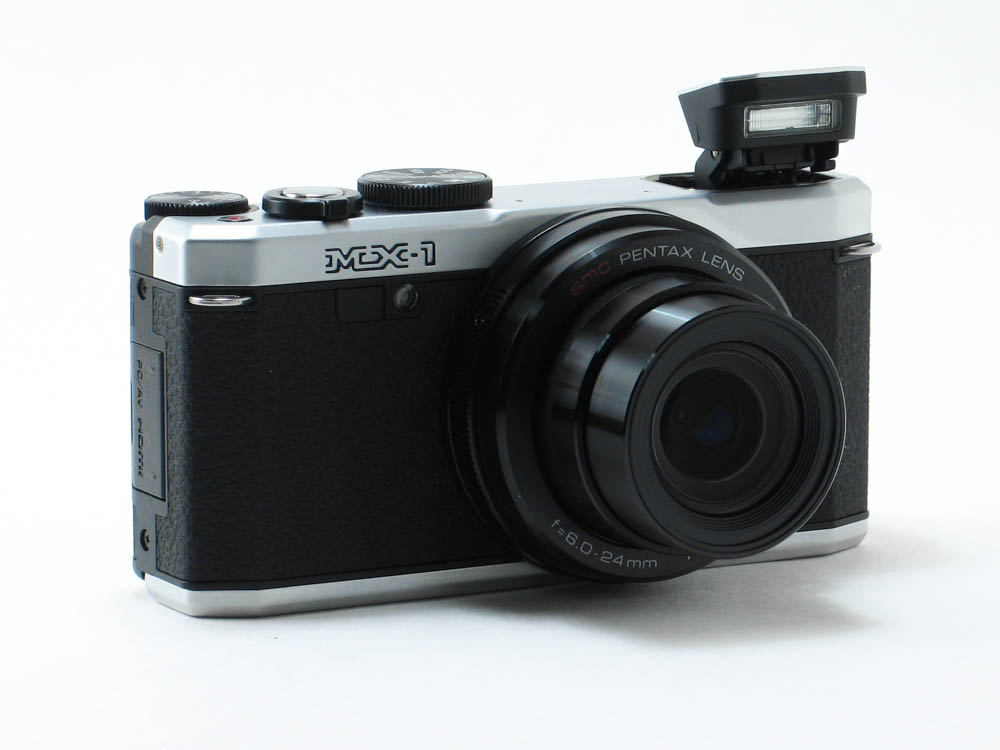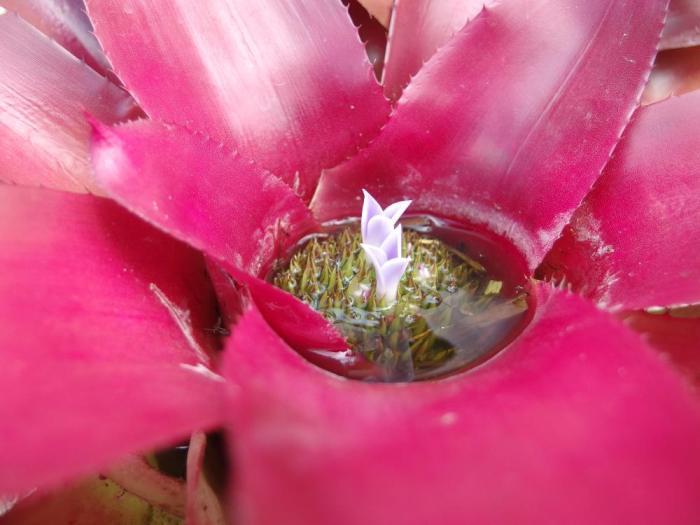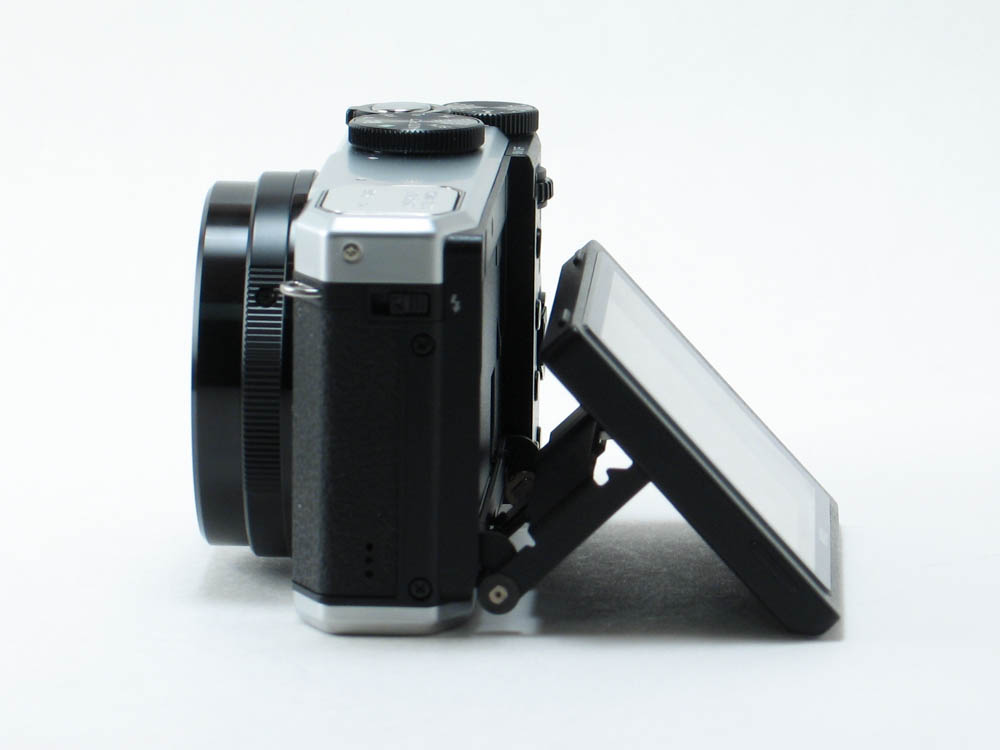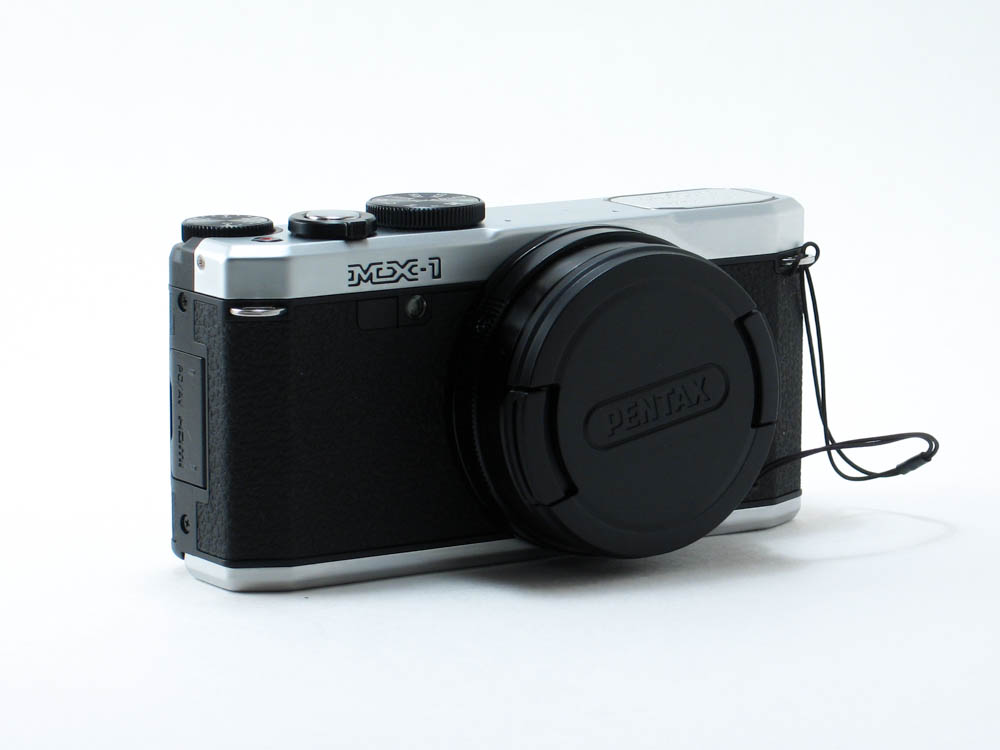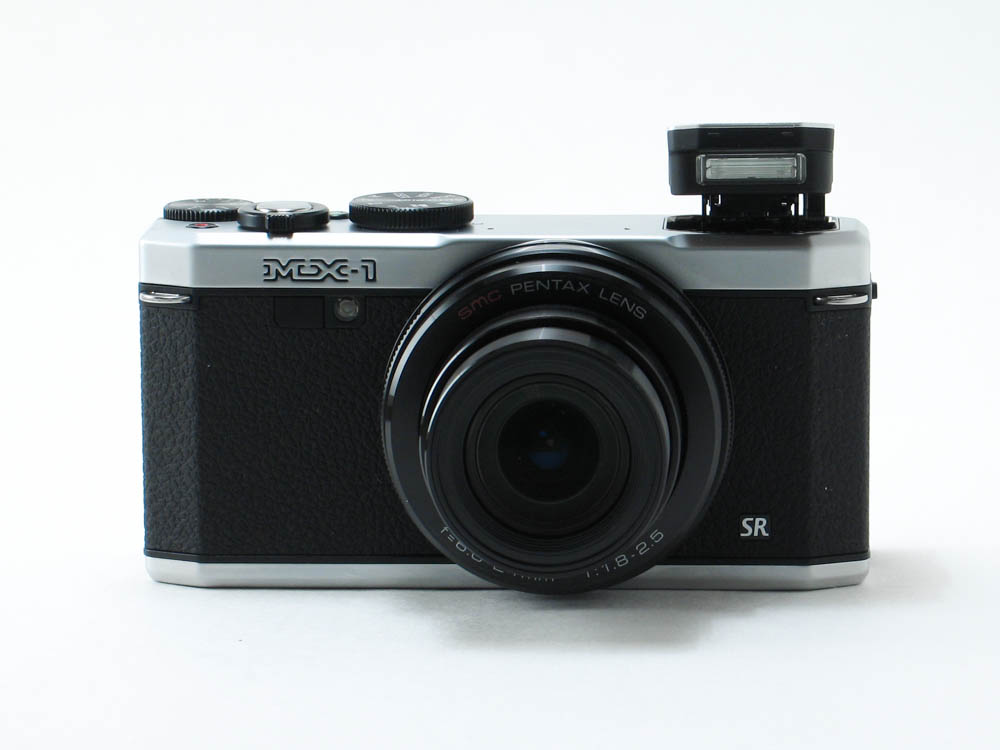I will say that for the most part, I am a mirrorless camera user. I like being able to change lenses to what suits my needs at a particular time as well as being able to shoot photos through a viewfinder. However, there are times when I just don’t want to deal with carrying around all that gear but I can’t because I don’t have a lens that can cover the entire range that I want. If I did, it would still be a massive lens I’d need to carry. That’s where cameras like the new PENTAX MX-1 come in handy. It’s about the same size as most mirrorless cameras but has a fixed zoom lens with a shooting range of 28-112mm in a 35mm format and that retracts when not in use. Not only that, it has a ton of DSLR type feature and settings which makes it perfect for more advanced photographers or those novices who want an inbetween camera that is not as daunting as a DSLR.
Body & Design
I covered my initial thoughts about the body and design of the PENTAX MX-1 here. I suggest reading that portion of the review first. For the most part, my initial impressions still stand but for the sake of this review, I’ll highlight some more impressions that I noticed over the course of usage that I didn’t necessarily notice when I fist got the camera. The initial impression was based on just looking at the MX-1 and not impressions from usage which is what I will address here.
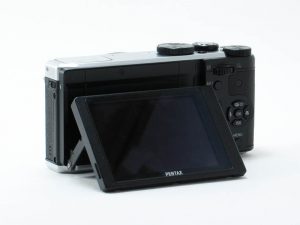 For starters, those who want a camera that they can carry around with them all the time in their pocket or purse may want to look elsewhere. The camera isn’t small by any means and it’s also a bit on the heavy side. I would attribute the weight to the quality materials PENTAX used to construct the MX-1. I mainly carried the MX-1 around with me in my backpack so weight really wasn’t an issue and when I was out somewhere where I had to have the camera in hand at all times, I’d usually just attach a wrist strap and carry it around like that or used the ever-handy Holdfast MoneyMaker if I wanted my hands free. I mean the MX-1 isn’t terribly heavy, but you’ll start to feel the weight of it over a period of time. It’s not something I can just slip into my back pocket.
For starters, those who want a camera that they can carry around with them all the time in their pocket or purse may want to look elsewhere. The camera isn’t small by any means and it’s also a bit on the heavy side. I would attribute the weight to the quality materials PENTAX used to construct the MX-1. I mainly carried the MX-1 around with me in my backpack so weight really wasn’t an issue and when I was out somewhere where I had to have the camera in hand at all times, I’d usually just attach a wrist strap and carry it around like that or used the ever-handy Holdfast MoneyMaker if I wanted my hands free. I mean the MX-1 isn’t terribly heavy, but you’ll start to feel the weight of it over a period of time. It’s not something I can just slip into my back pocket.
Aside from the size and weight issue, the MX-1 is one solid camera. Fit and finish in incredibly good and not one portion of the camera felt cheap or fragile to me. PENTAX really put out a quality product here that is quite beautiful to look at. Every button and dial has a purpose and it makes usage a joy.
 Now, are there any features that I think PENTAX should have included with the MX-1? Yes, there are. For starters, I would have liked it if the MX-1 had a hot shoe for attaching external flash units or either an optional electronic viewfinder. Yes, most people probably would never even have used it, but it would have been a nice option to have for those that might. And speaking of an EVF, I would actually liked to have seen one built in or at least an optical viewfinder of some sort. I know this probably wouldn’t have been possible because of the tilting screen on the back but I found myself constantly bringing the camera up to my eye thinking I could do that but forgetting I couldn’t. Lastly, it would have been really neat if there was a focusing ring on the front that allowed me to manually focus the lens instead of doing it through the menu options. That would have been a killer feature coupled with PENTAX’s awesome focus peaking feature found on their other cameras.
Now, are there any features that I think PENTAX should have included with the MX-1? Yes, there are. For starters, I would have liked it if the MX-1 had a hot shoe for attaching external flash units or either an optional electronic viewfinder. Yes, most people probably would never even have used it, but it would have been a nice option to have for those that might. And speaking of an EVF, I would actually liked to have seen one built in or at least an optical viewfinder of some sort. I know this probably wouldn’t have been possible because of the tilting screen on the back but I found myself constantly bringing the camera up to my eye thinking I could do that but forgetting I couldn’t. Lastly, it would have been really neat if there was a focusing ring on the front that allowed me to manually focus the lens instead of doing it through the menu options. That would have been a killer feature coupled with PENTAX’s awesome focus peaking feature found on their other cameras.
Those are probably the main things I would like to have seen on the MX-1 but for its first outing, it’s still a great camera to shoot with despite those deficiencies. I had more fun shooting with the MX-1 than I do shooting with a typical small, point-and-shoot. I think it’s because of the heavier weight, to me it felt more like a real camera and less like a toy. I also really appreciated that tilt screen as it allowed me too shoot at some really difficult angles.
Last bit that’s just small observation and a welcome feature despite it being something minor, I really love how PENTAX included a lens cap safety mechanism. By that, I mean that if the lens cap is on, the lens will not extend. Turning the camera on with the lens cap attached throws up an error message to please remove the lens cap before shooting. This means less damage to the lens as it will no extend accidentally and this also means than if it’s in your bag and you accidentally hit the power button, it will not extend and get damaged.
Usage
If you’ve used a PENTAX camera before, using the MX-1 will be like riding a bike (that’s if you can ride a bike). For starters, it’s possible to use the MX-1 without ever really digging through the menus thanks to a generous amount of buttons and dials. Modes can be easily chosen via the top mounted mode dial as well as the exposure values. In aperture and shutter priority modes, those settings can be messed with using the thumb dial on the back of the camera. Pretty much everything can be done via one of the dials or buttons. The only things you really can’t do that you need to dig into the menus for is to adjust the white balance, focusing mode, and manually selecting on of the built in scene modes.
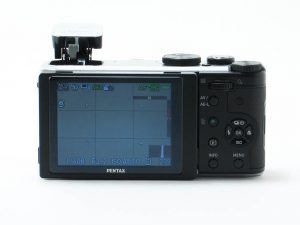 However, PENTAX does make sifting through menu adjustments easy by using their quick menu feature if you tap the INFO button. This brings up the quick menu that allows you to adjust various settings quickly by highlighting them and then using the dial to choose options. This is found on other PENTAX cameras as well so if you’ve used those, this will be a familiar sight to you.
However, PENTAX does make sifting through menu adjustments easy by using their quick menu feature if you tap the INFO button. This brings up the quick menu that allows you to adjust various settings quickly by highlighting them and then using the dial to choose options. This is found on other PENTAX cameras as well so if you’ve used those, this will be a familiar sight to you.
For the most part though, the MX-1 is a very simple camera to use especially with the amount of advanced features it has. It has a lot of features that would be found on a DSLR instead of a regular point-and-shoot but that’s what makes the MX-1 so versatile. You can’t take photos in almost any situation without being limited to presets given to you in the scene selection. Photographers with more experience can shoot manually and make little adjustments that you usually don’t get with regular point-and-shoots.
Now, I want to address 1 feature that for the most part, has been one of the coolest features that PENTAX puts on their cameras and that is the 1cm Macro mode. This is a feature that you do not find on most other cameras and I’ve only really seen it on PENTAX cameras. With 1cm Macro mode, you are able to get super close to an object and shoot it close up, at a distance of 1cm. That means you can get some ridiculously cool macro shots up close that you usually can’t with other cameras. This mode is great for taking photos of flowers and plants as well as other smaller objects or objects you want to shoot up close. The only problem with 1cm Macro mode is that you have to remember to switch out of it before taking regular photos. Luckily that is just a button press away.
There wasn’t much about using the PENTAX MX-1 that I did not like, except for the occasional bulk issue. Other than that, a very simple camera to use and figure out yet filled with powerful advanced features for more advanced shooters. Both novices and pros alike should like the MX-1.
Image Quality
One of the better places I like to visit when taking sample photos are outdoor gardens and for this shoot, I was lucky enough to be in a city that has an incredible botanical garden, the Naples Botanical Gardens in the lovely city of Naples, FL.
For most of these shots, I had the camera set to aperture priority mode which lets the camera choose shutter speeds while I choose the aperture. I also had to set the camera up for macro mode for some as well as using the 1cm macro mode for super closeups. You can probably tell which ones those are.
Overall, I’ll have to say that the PENTAX MX-1 produced some very good photos that I did not need to edit. The colors are nice and rich and you can really see the details with the macro shots. I’m also very impressed with the fact that for most of these shots, I don’t really see the need to even have to edit them in Lightroom as they looks pretty good as is. For Bokeh fans, you can see too that the MX-1 produces some really great blurring when set at a low aperture setting resulting in a really shallow depth of field.
If you want to see the entire gallery of samples, please check out my Flickr page here. The photos here have been resized for the web but the ones on my Flickr page are at full resolution. None of the photos were edited and are presented as is straight from the MX-1.
Final Thoughts
I really enjoyed my time with the PENTAX MX-1. Yes it’s rather large and bulky for a “compact” camera and there are a few things that I’d like to see changed, but overall I really liked using it. It’s fast, takes fantastic photos that I don’t even need to really edit in post production, and most of all it’s very easy to use. I like the fact that it is a good alternative to carrying around my larger mirrorless camera which can be quite bulky with the extra lenses I have to carry around. With the MX-1, I get the zoom range I would get from carrying around 2 separate lenses and I can actually carry it around with the rest of my stuff instead of carrying around a separate camera bag. The main thing is that image quality to me is excellent and suits my needs just fine for a compact camera.
The PENTAX MX-1 is also pretty affordable for a camera in this range. You can find it for around $450 right now and even less if you shop around.
Shop Links
- Silver – Pentax MX-1 Silver
- Black – Pentax MX-1 Black
